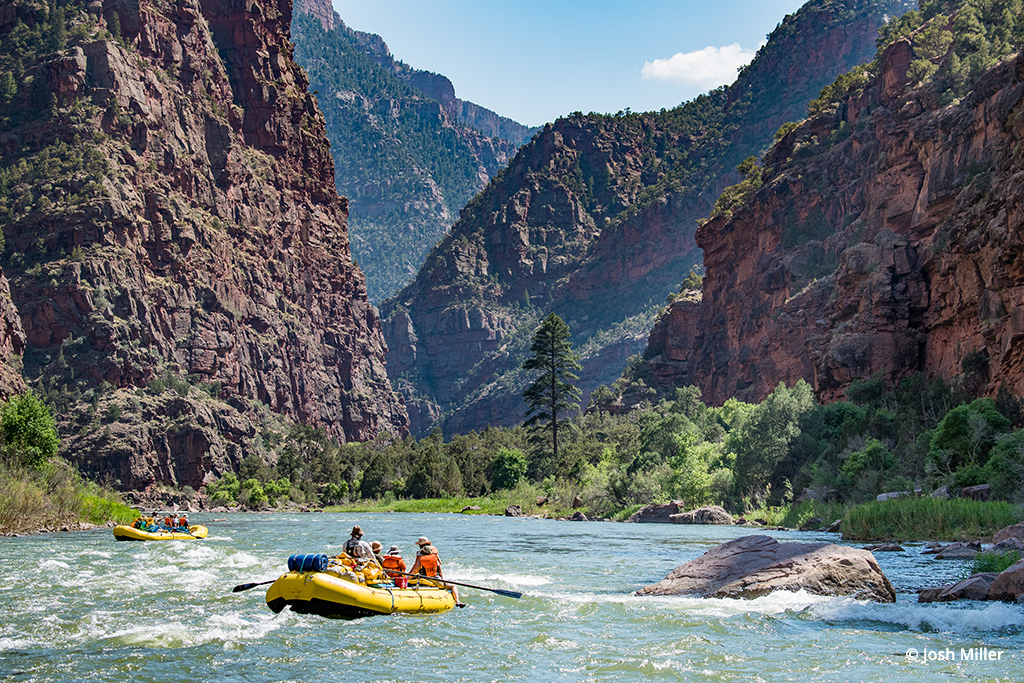
Rafting the Gates of Lodore section of the Green River through Dinosaur National Monument offers photographers a wide range of geology and dramatic canyon walls to observe.
After feeling trapped at home for the past couple of years, I think it is fair to say that most of us nature photographers are going a bit stir crazy looking forward to finally getting out shooting more often again. With this desire to resume travel comes the fact that more and more photographers are visiting the same crowded locations. With overcrowded parks and permit systems becoming more common in places like Glacier and Yosemite National Parks, perhaps it’s time to explore some lesser-visited parks and monuments around the country.
The site of one of the most contested environmental battles in U.S. history, Dinosaur National Monument offers photographers a chance to explore canyon country without the crowds of more popular parks. Dinosaur sits in the corner of northeastern Utah and northwestern Colorado near the town of Vernal, Utah. While it may seem out of the way, that’s part of the beauty of it, and it makes a great side trip if you’re traveling between Salt Lake City and Denver or the surrounding areas.
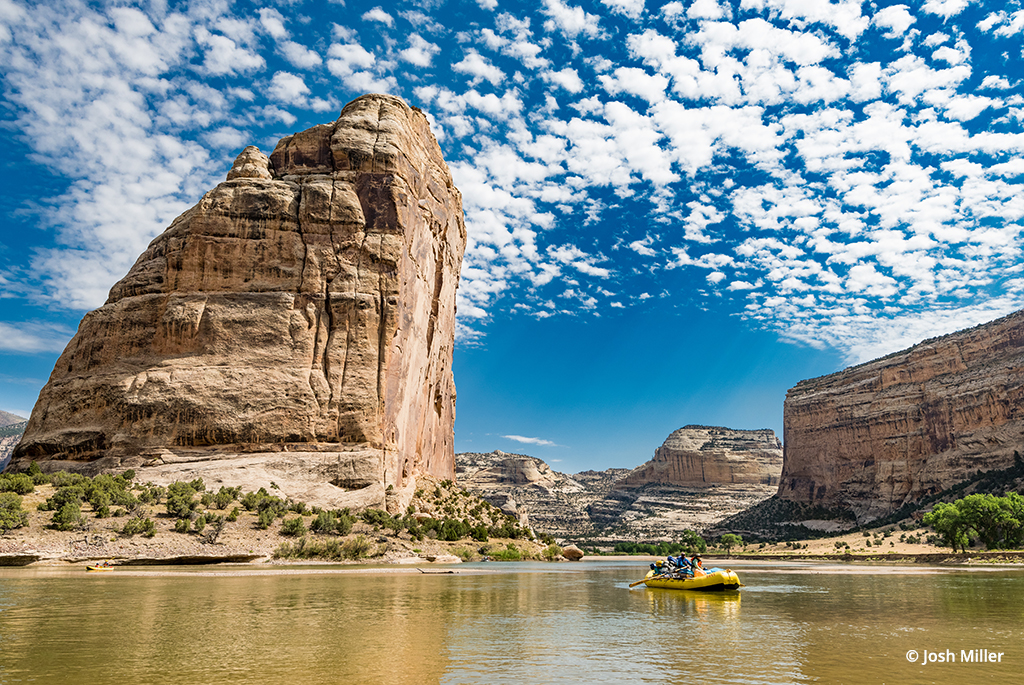
Rafting through Echo Park is the highlight of every trip through Dinosaur. It’s hard to imagine this area was almost dammed and flooded. You can also drive to this location via a 13-mile rough dirt road.
A Condensed History Of Dinosaur
Not surprisingly, when you consider the name, the history of Dinosaur National Monument starts during the Mesozoic Era (252 to 66 million years ago) when dinosaurs roamed the earth before humans. The monument is home to one of the largest fossil beds in North America, if not the world. For a time at the turn of the previous century, when these deposits were discovered, it was the most productive dinosaur quarry in the world. Fossils were shipped to museums all over the country, and many of the dinosaur fossils we see in museums to this day came from these digs.
In response to this rapid excavation and fossil export, the monument was established in 1915 under the Antiquities Act in order to preserve the remaining fossils. To protect some of the exposed fossils on site, the National Park Service constructed a two-story glass building covering one of the quarries. For those interested in seeing dinosaur bones up close—great for the entire family—this is a must-visit spot with its partially excavated hillside and exposed fossils covering the entire wall. Both the quarry exhibit as well as the park visitor center offer dinosaur enthusiasts a chance to explore and learn firsthand what these creatures’ lives might have been like.
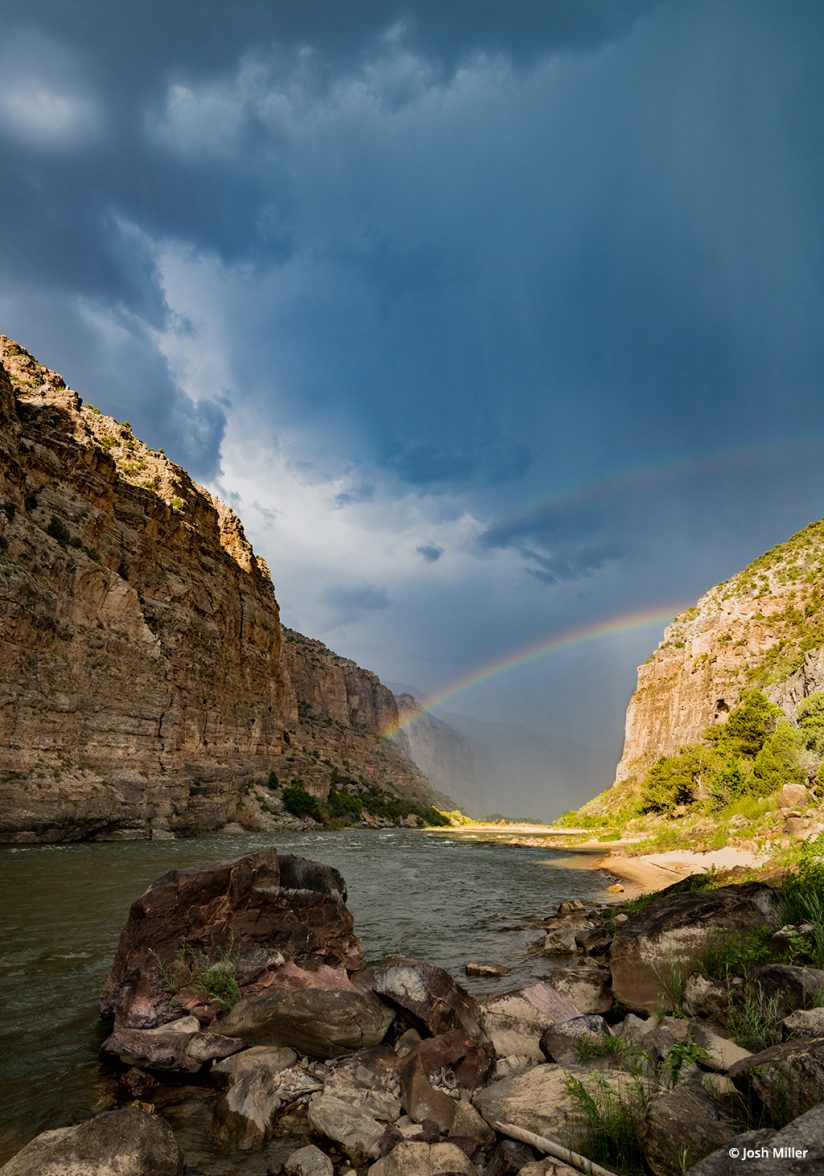
One of the benefits of a longer river trip through the park is that you have time in camp to watch the weather and anticipate rainbows before they happen. Just remember to tie down your tent before the wind picks up and sends it into the river.
The story of Dinosaur National Monument’s place in conservation history continued into the 1950s when the Bureau of Reclamation proposed building a dam in the crown jewel of the monument, a location known as Echo Park at the confluence of the Green and Yampa Rivers. Still reeling from the damming of Yosemite’s Hetch Hetchy Valley in 1923, the Sierra Club and other conservation groups took up the fight and mobilized the country. This was perhaps the first national conservation battle in U.S. history where large numbers of ordinary citizens became involved. Public outcry over building dams in national monuments and parks was huge. In the end, a compromise was struck in which the Sierra Club agreed not to oppose the construction of a dam in unprotected Glen Canyon in exchange for protecting beloved Echo Park and Dinosaur National Monument.
.jwplayer { margin-bottom: 20px; margin-left: auto; margin-right: auto; }
At the time, little was known of Glen Canyon, but as the Glen Canyon Dam was being constructed, and the canyon above it was explored prior to it becoming Lake Powell, the compromise became a bittersweet victory. With its beautiful narrow slot canons, trickling springs and meandering river, Glen Canyon likely should have been protected as a national park or monument as well. After realizing what was lost in the compromise, Sierra Club director David Brower regretted the decision for the rest of his life.
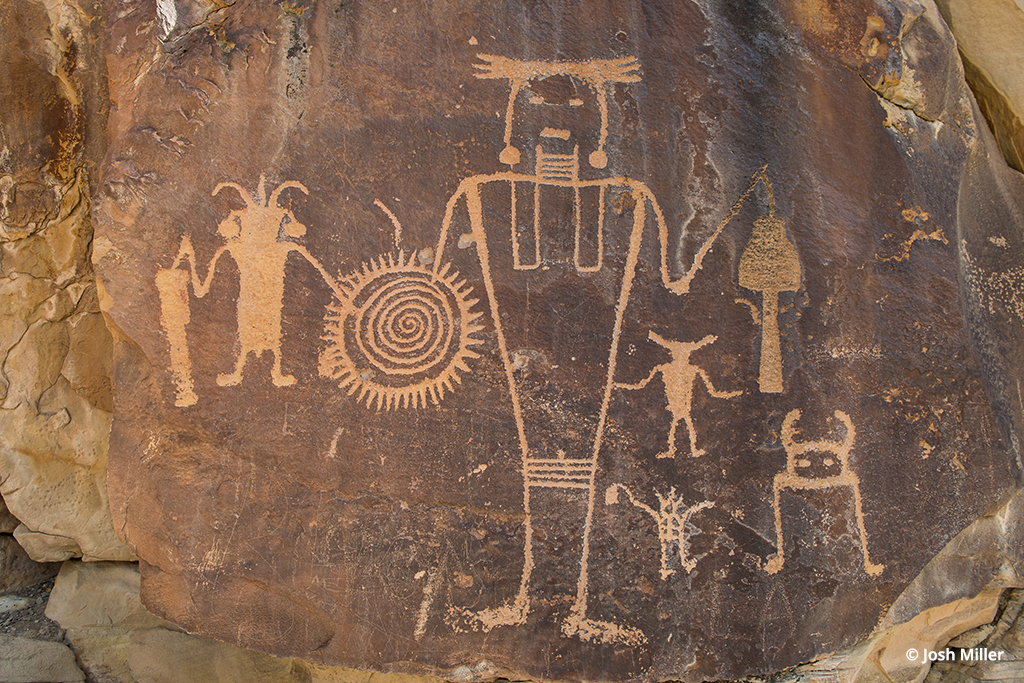
There are many petroglyphs throughout the park. While some are more easily accessed from the river, there are others just a short walk from roadside pullouts.
The loss of Glen Canyon also holds an important place in photographic history as the event that caused the Sierra Club to first start publishing lavish, photographic “coffee table” books to promote its environmental causes. The Sierra Club sent early color landscape photographer Eliot Porter into the canyon to document what would soon be flooded, eventually producing the seminal 1963 book The Place No One Knew: Glen Canyon on the Colorado.
Road Trip Into The Canyon
While you can visit Dinosaur National Monument year-round, most people visit during the summer. There are many photogenic roadside views into the canyons (think Grand Canyon-type vistas), several great hikes and, for more adventurous photographers who don’t mind possibly putting a few scratches on their cars, a visit down into Echo Park.
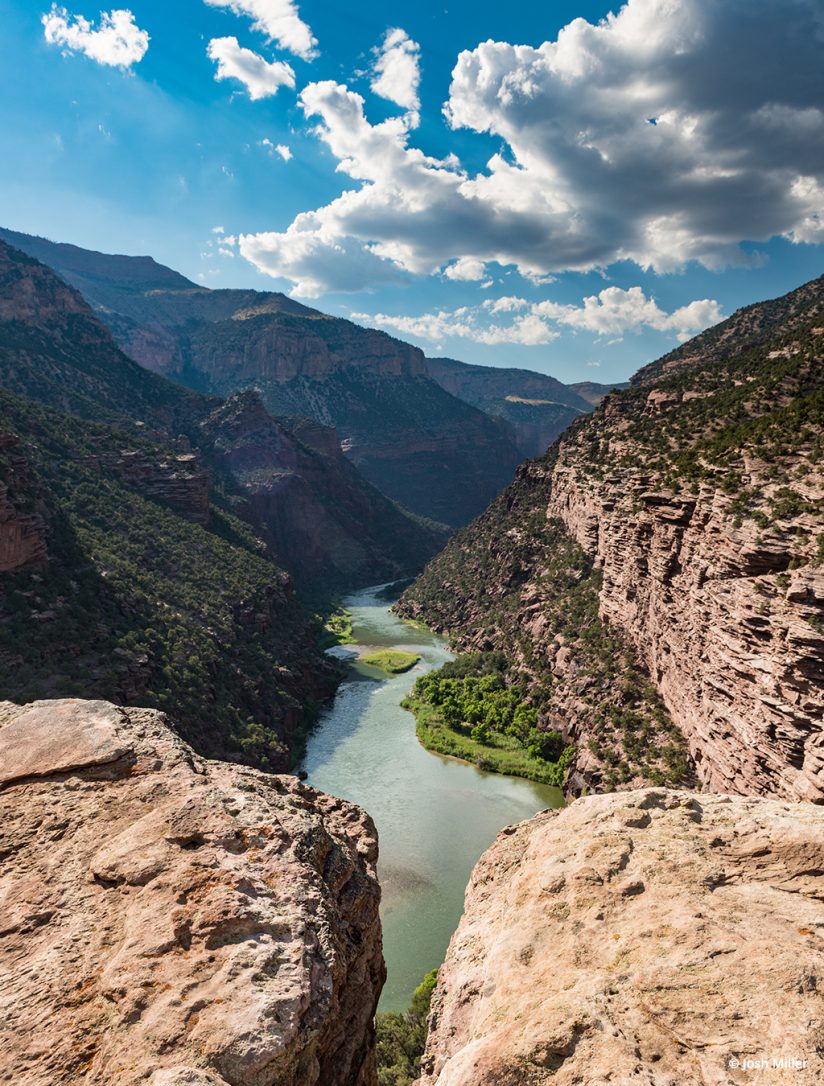
High vantage points always give photos a feeling of scale. Looking down into the Lodore Canyon of the Green River, I was all set to shoot sunset from this location until lightning started hitting nearby, and I was forced to retreat back to our riverside camp.
One of the highlights of a visit to Echo Park—aside from great photography, hiking and swimming—is the road leading down into it. After navigating several miles of paved roads, you must drive 13 miles one way on a rough dirt road winding down from the rim to reach the river (high-clearance vehicles only). While you don’t need a 4×4, the road itself is an exciting adventure with lots of photo opportunities along the way—make sure your car has a full tank of gas and is in good repair, as getting towed would cost a fortune. We drove our old Ford camper van down and spent several days camping at the confluence a few summers back. You can make this a day trip or camp out for a few days in order to have the best chance at sunrise/sunset light. Just check with the rangers about current road conditions before starting down.
Rafting The Rivers Of Dinosaur
While seeing the park from the road is amazing, without a doubt, the best way to see the park is to join a Gates of Lodore rafting trip like those offered by OARS rafting. Following in the footsteps of John Wesley Powell, Gates of Lodore trips range in length from three to five days and are far cheaper and more family friendly than longer Grand Canyon trips—and don’t have years-long waiting lists. While the whitewater is fun, it is not as “extreme” as some whitewater-specific trips, which is better for photographers. Without question, the Gates of Lodore is one of the most scenic rafting trips in the country, rivaling even the Grand Canyon. It offers steep canyon walls, exciting rapids, dramatic light and great hiking, giving adventurous photographers a chance to explore and shoot in the heart of the canyon in locations otherwise unreachable.
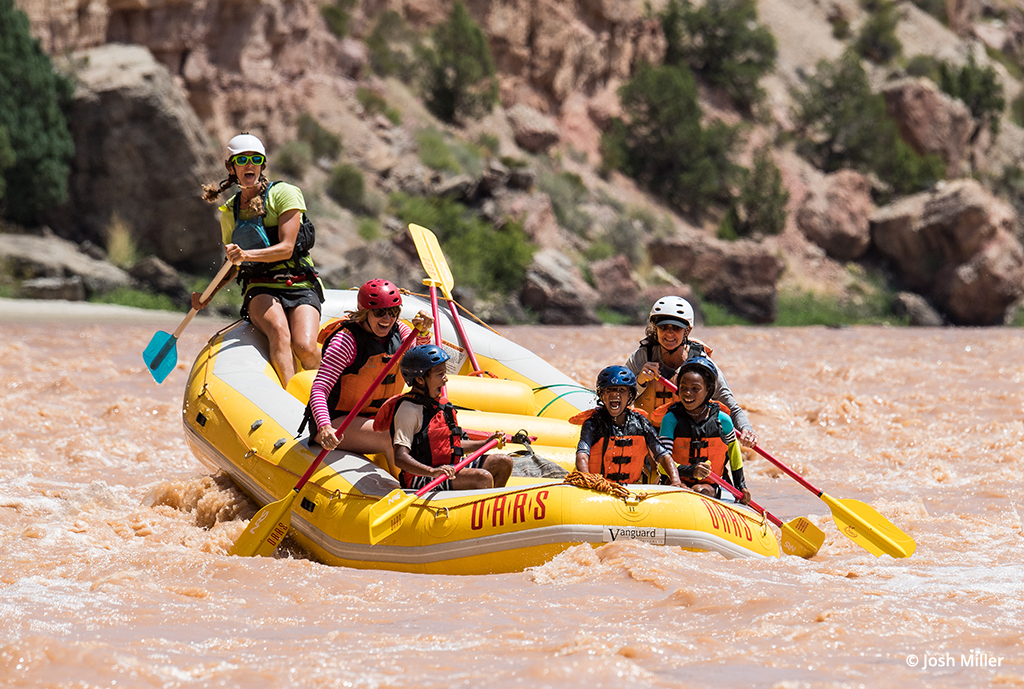
Overnight and single-day rafting trips on the Green River through the monument are great family-friendly activities. While splashy and fun, they are fairly tame by whitewater standards, making them great trips for younger passengers or people a bit nervous about rafting.
While you might think of rafting trips for the rafting experience itself, one of the big benefits for photographers is the time in camp off the river. Aside from setting up your tent (if you even need one), the guides do all of the rest of the camp chores, so you have time to relax and photograph to your heart’s content, all while a gourmet meal is being prepared in the riverside kitchen. Imagine shooting a stormy sunset in a location few other photographers have shot and then sitting down to homemade lasagna, fresh salads and fruits, and even ice cream. Yes, I once had a fully frozen ice cream sandwich 12 days into a Grand Canyon trip when it was 120 degrees out—commercial outfitters know their food.
To maximize your shooting and exploring time, I would recommend going on the longest possible trip. While the actual river length traveled is the same, it means you have more time for side hikes and shooting throughout the day and more time in camp each morning and evening for photography.
Either way, whether you visit the park from the roadside, explore on foot or from a raft, Dinosaur National Monument will blow you away, leaving you thinking, “Why haven’t I heard more about this place, and when can I come back?”
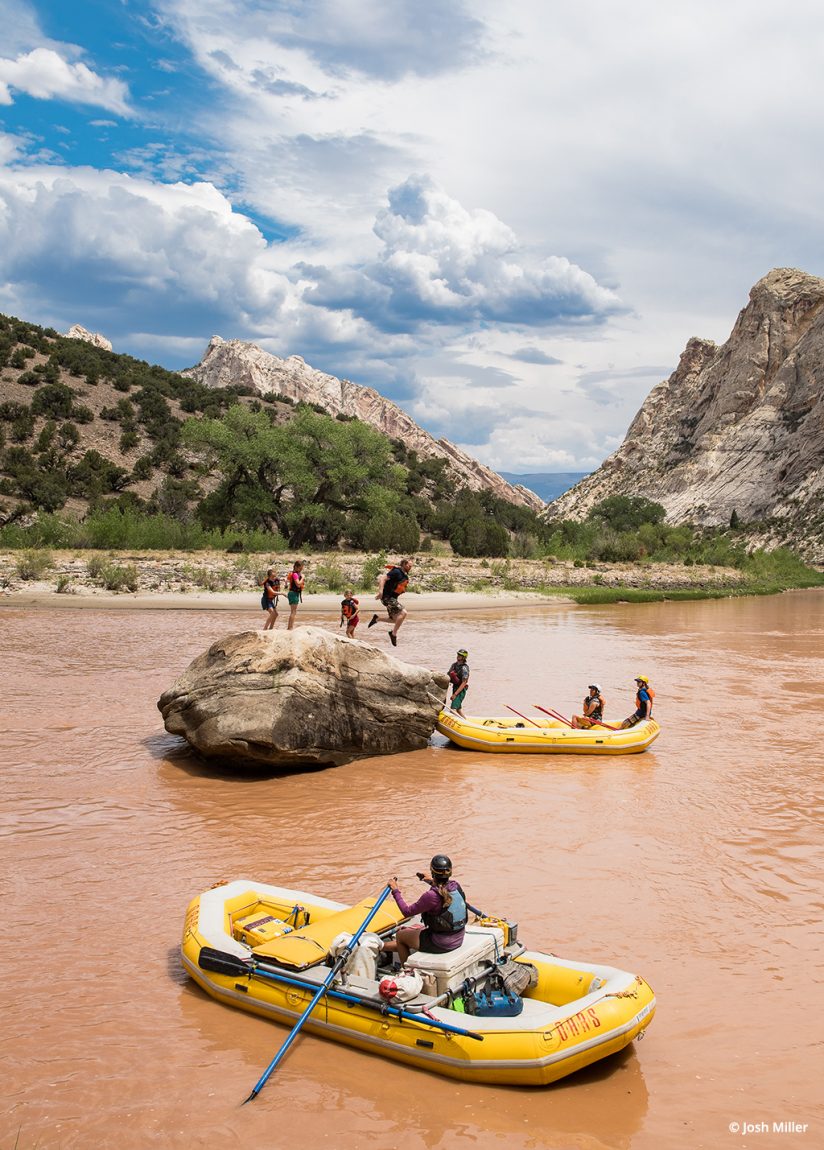
Part of the fun of any good river trip is a bit of cliff or rock jumping. Guides know the safe spots and can help passengers feel comfortable pushing their limits safely.
Photo Gear For River Trips
Having shot multiple Grand Canyon and Alaskan river trips, I would say first that they are very hard on gear. With rivers come the obvious issues related to water, but perhaps less obviously, sand and dust as well. It can be very difficult to keep your gear clean and safe. There’s no question that a river trip puts your gear at a higher risk than roadside shooting, but gear is meant to be used and is tougher than we think. Plus, if you want unique photos from places rarely visited, it takes effort, and your equipment takes a beating—all in a day’s work for outdoor photographers.
My first and most important advice is to limit what you bring and pack it in a Pelican case. I have carried thousands of dollars of camera gear down thousands of miles of rivers, and there is nothing else I would trust with my equipment. Pelican cases are as tough as they come and not only protect your gear from water on the river but also from dust storms and rain. That being said, even a Pelican case can leak, so check your gaskets for sand, protruding camera straps…anything that might obstruct the seal.
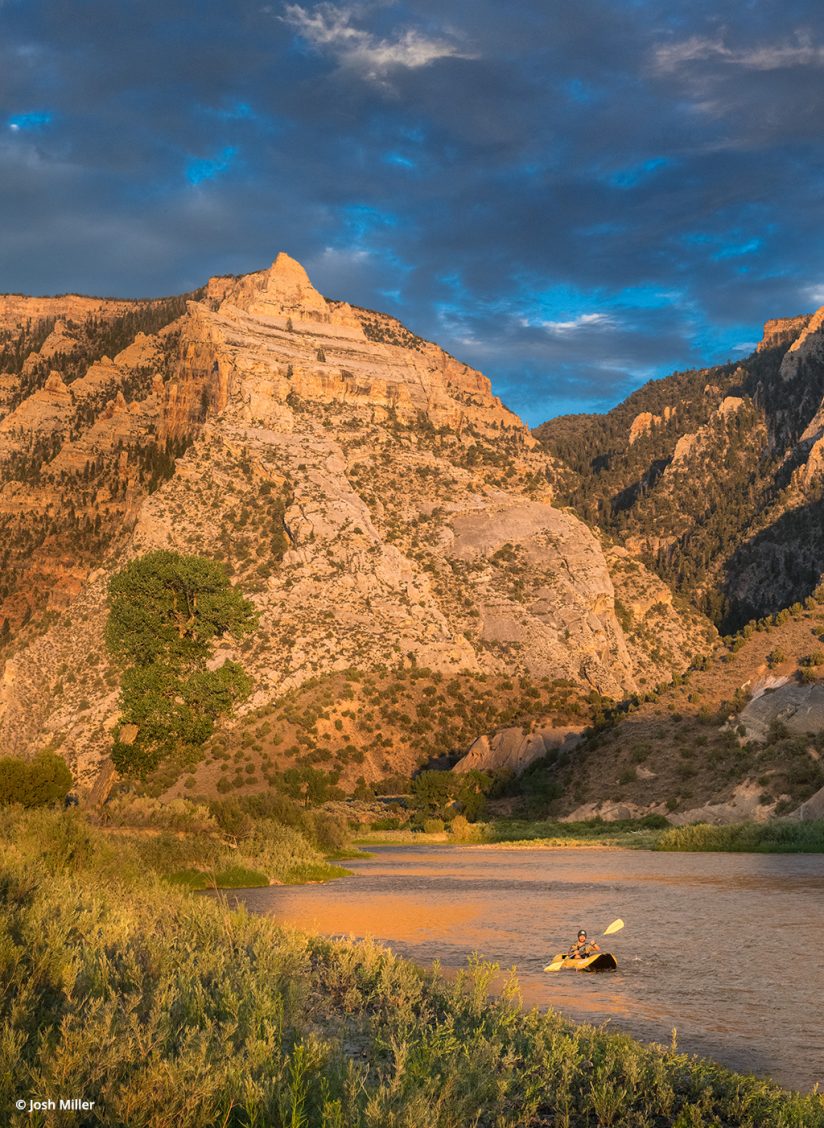
Always keep an eye on the light. This sunset paddle shot happened because I saw the light changing and the clouds getting dramatic. I convinced one of the guides to hike upriver with an inflatable kayak for the shot. Guides will do just about anything to make their clients happy.
Pro tip: Pelican cases also make it possible to ditch the lens cap. There is nothing worse than being in a rush to get your camera out to shoot quickly or put it away quickly before a rapid than dealing with lens caps. In a raft, once you drop the cap, it is either wet or gone completely, and either way, you don’t want to put it back on the lens. In a well-fitted Pelican, the camera is held in place, and thus nothing ever touches the front of the lens. Add a UV filter to all your lenses to protect against splashes and dust, and you are good to go. I haven’t used a lens cap in years on a river trip.
I bring as little gear as possible and try not to change lenses. Being that I always have a backup body on every shoot, I put my telephoto on my faster body for shooting action from the boat or shore and attach a mid-range zoom to my slower body for in-the-boat shots as well as around camp. I also carry a wide-angle lens, which works great while riding through rapids if you are willing to risk your camera.
For power when I’m away from lodging, there are solar systems offered by companies like Goal Zero and Anker, but with a trip as short as Gates of Lodore, you can save money and hassle by bringing a USB battery pack and just recharging your batteries from that. Don’t forget to carry plenty of memory cards and leave the laptop at home. I once took a laptop on a 16-day Grand Canyon trip to upload images. While the system worked, keeping it charged with solar panels was an endless nightmare.
See more of Josh Miller’s work and learn about his workshops, including Bears and Eagles of Alaska, Yosemite, Lake Tahoe and Costa Rica, at joshmillerphotography.com.
<!–  Text & Photography By Josh Miller –>
Text & Photography By Josh Miller –>